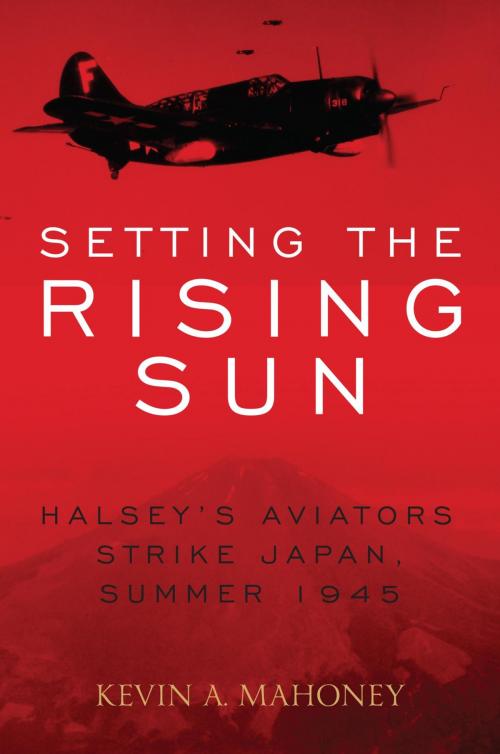Setting the Rising Sun
Halsey's Aviators Strike Japan, Summer 1945
Nonfiction, History, Military, World War II| Author: | Kevin A. Mahoney | ISBN: | 9780811768429 |
| Publisher: | Stackpole Books | Publication: | April 1, 2019 |
| Imprint: | Stackpole Books | Language: | English |
| Author: | Kevin A. Mahoney |
| ISBN: | 9780811768429 |
| Publisher: | Stackpole Books |
| Publication: | April 1, 2019 |
| Imprint: | Stackpole Books |
| Language: | English |
By the summer of 1945, Adm. Bull Halsey’s U.S. Third Fleet had fought its way far enough in the Pacific that its carrier-based fighters could launch attacks on Japan itself in preparation for the invasion of the home islands, planned for the fall of 1945. This mission U.S. Navy fighters, fighter-bombers, dive-bombers, and torpedo-bombers—Hellcats, Avengers, Helldivers, and more—carried out with a vengeance, striking airfields, industrial targets, and coastal facilities while flying into the teeth of Japanese air defenses. Meanwhile, the fleet’s aircraft continued to attack the Japanese navy (sinking a submarine from the air, attacking—but not sinking—the famous battleship Nagato, and attacking other ships), interdict enemy merchant shipping, and defend against kamikaze attacks on Third Fleet. As late as the morning of August 15—the day the ceasefire took effect (before the formal signing on September 2)—the fighters saw hard fighting, downing Japanese fighters making last-ditch, almost literally last-minute attacks on the U.S. fleet.
Numerous books have covered the American bomber war against Japan in World War II, from the Doolittle Raid to Curtis Lemay’s strategic bombing campaign, the firebombing of Tokyo, and the dropping of the atomic bombs. But other than memoirs and bit parts in air war histories, fighter and fighter-bomber operations have received short shrift. Setting the Rising Sun corrects that oversight, zooming in on fighters during the war’s final two months. In this carefully researched narrative history, Kevin Mahoney recounts this vital period of the Pacific War with drama and attention to detail. He draws on both American and Japanese perspectives to reconstruct intense combat missions and place them in the context of a war that was hurtling toward its conclusion in two mushroom clouds in Japan.
By the summer of 1945, Adm. Bull Halsey’s U.S. Third Fleet had fought its way far enough in the Pacific that its carrier-based fighters could launch attacks on Japan itself in preparation for the invasion of the home islands, planned for the fall of 1945. This mission U.S. Navy fighters, fighter-bombers, dive-bombers, and torpedo-bombers—Hellcats, Avengers, Helldivers, and more—carried out with a vengeance, striking airfields, industrial targets, and coastal facilities while flying into the teeth of Japanese air defenses. Meanwhile, the fleet’s aircraft continued to attack the Japanese navy (sinking a submarine from the air, attacking—but not sinking—the famous battleship Nagato, and attacking other ships), interdict enemy merchant shipping, and defend against kamikaze attacks on Third Fleet. As late as the morning of August 15—the day the ceasefire took effect (before the formal signing on September 2)—the fighters saw hard fighting, downing Japanese fighters making last-ditch, almost literally last-minute attacks on the U.S. fleet.
Numerous books have covered the American bomber war against Japan in World War II, from the Doolittle Raid to Curtis Lemay’s strategic bombing campaign, the firebombing of Tokyo, and the dropping of the atomic bombs. But other than memoirs and bit parts in air war histories, fighter and fighter-bomber operations have received short shrift. Setting the Rising Sun corrects that oversight, zooming in on fighters during the war’s final two months. In this carefully researched narrative history, Kevin Mahoney recounts this vital period of the Pacific War with drama and attention to detail. He draws on both American and Japanese perspectives to reconstruct intense combat missions and place them in the context of a war that was hurtling toward its conclusion in two mushroom clouds in Japan.















